Vertical Farming
Article Directory
ToggleWelcome to the future of agriculture—vertical farming! This innovative approach reimagines how we grow food by utilizing vertical spaces, advanced technologies, and sustainable practices. Join us as we explore how vertical farming is transforming food production and shaping a healthier, greener world.
What is vertical farming?
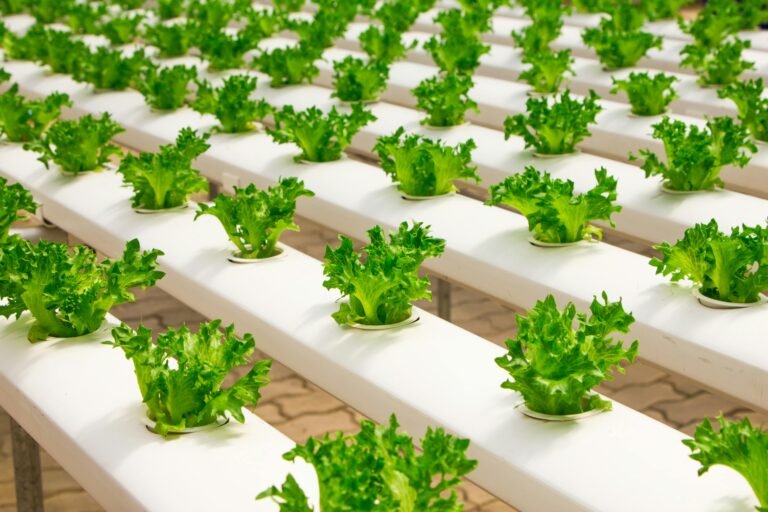
How to Change the Face of Agriculture towards a Sustainable Future
In a world where urbanization and the growth of population are moving faster than traditional agricultural practices, vertical farming is emerging as a game-changer. This innovative method for growing crops uses vertically stacked layers in controlled environments, presenting a sustainable and efficient solution to the challenges of modern agriculture.
What is Vertical Farming?
Vertical farming refers to a process of crop production in vertically stacked layers within indoor, well-conditioned facilities like buildings, shipping containers, or warehouses. It doesn’t involve traditional soil-based cultivation but instead employs methods including the following:
Hydroponic systems: growing crops in water-soluble nutrients without the use of soil.
Aeroponics systems: spraying the roots of the plants regularly with mist containing nutrient solutions.
Aquaponics systems: raising fish along with plants in a symbiotic combination.
These systems are powered by LED lighting, automated technology, and data-driven monitoring to ensure optimal plant growth year-round.
The Current State of Vertical Farming
In the U.S., especially in urban cities, vertical farming has spread like wildfire. With the likes of AeroFarms, Plenty, and Bowery Farming leading from the helm, companies are scaling and reducing costs by leveraging better technology. Furthermore, partnerships among vertical farming companies and grocery chains are bringing the produce even closer to the consumer.
The Future of Vertical Farming
As technology improves, vertical farming will most definitely play an important role in global food security. Advancing technology in AI, robotics, and renewable energy is going to drive the costs further down while increasing efficiency. Besides, the attempts of researchers to find a way to grow staple crops such as wheat and rice in a vertical system make the concept further expandable.
Final Thoughts:
Vertical farming represents an audacious leap in how agriculture would be sustainable, with consumption of resources down, limitation of environmental degradation, and fresh produce finding its way to towns and cities. In other words, a solution to the increasingly expanding population quandary could be available. Soon enough, vertical farming will certainly be one of the very important bases of modern food production, as it reconstitutes the face of agriculture.
====================================================================================
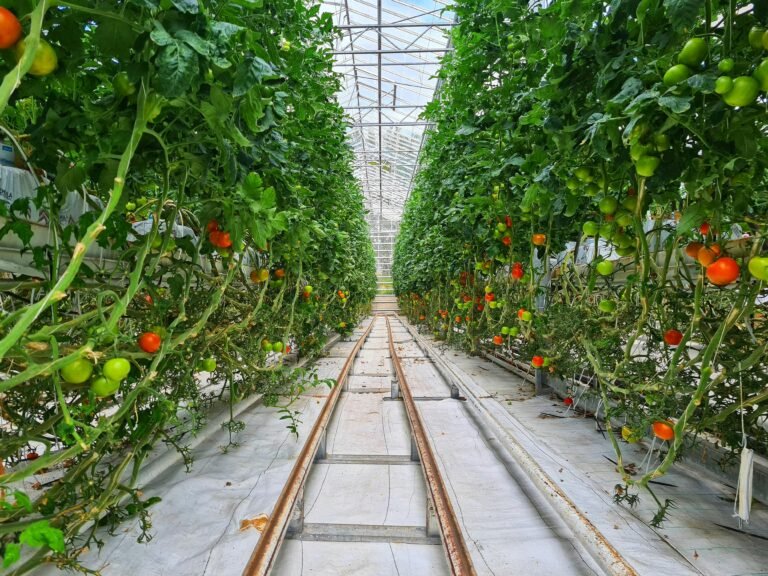
Benefits and challenges of vertical farming
Key Advantages of Vertical Farming
Vertical farming offers several advantages over conventional agriculture:
Maximized Space Usage: By growing upward instead of outward, vertical farming dramatically reduces the land required for cultivation.
Year-Round Production: Controlled environments eliminate seasonal dependencies, ensuring a steady supply of fresh produce.
Water Efficiency: Vertical farms use up to 95% less water than traditional farming methods by recycling and minimizing waste.
Smaller Transportation Footprint: Urban vertical farms can be located closer to consumers, reducing the need for long-distance shipping and associated emissions.
Pesticide-Free Crops: Indoor farming environments are less prone to pests, thus eliminating the need for harmful chemicals.
Major Challenges in Vertical Farming
Despite its promise, vertical farming is not without challenges:
High Initial Costs and Infrastructure Requirements
Setting up a vertical farm requires a considerable investment in infrastructure and technology.
Energy Consumption and Sustainability Concerns
Operating LED lights and climate control mechanisms can be energy-intensive, although this has been somewhat offset through renewable energy applications.
Limited Crop Variety and Growth Challenges
Currently, vertical farming is focused on high-margin, fast-growing crops, such as leafy greens and herbs, although this technology is continually being developed for other crops.
Weighing the Pros and Cons of Vertical Farming
Let’s take a look at some of the most interesting pros and cons of vertical farming in greater detail :
Pros
Efficient land use:
It can be practiced in urban areas by minimizing the use of huge areas for farming.
Environmental Benefits:
Minimum water usage, avoidance of pesticides, and reduced transportation emissions make it more eco-friendly compared to traditional methods.
Ensuring Food Security and Supply Chain Stability:
Because production occurs year-round, supplies of fresh produce remain constant and reliance on imports is reduced, hence reducing disruption in supply chains.
New Job Opportunities:
The rise of vertical farming brings new job opportunities in technology, operations, and maintenance.
Cons
High Energy Use and Dependency on Artificial Lighting:
The artificial lighting and artificial climate control require a great amount of energy, although there is some development in integrating renewable energy into vertical farming.
Economic Barriers:
High initial investment and operating costs discourage small-scale businesses from venturing into the market.
Limited Crop Diversity:
While current systems work quite well for leafy greens and herbs, they are poorly adapted to staple crops, like grains and root vegetables.
Learning Curve: Need for Specialized Training
The adoption and management of vertical farming systems require special knowledge and training.
Such aspects make vertical farming capable of overcoming a lot of the challenges traditional agriculture faces because of the efficient use of land, environmental benefits, and improved food security. It does, however, present some obstacles: most relate to energy consumption and high initial costs, besides giving way to lower crop diversity. With new integrations of renewable energy resources and technological advancement, this will further be overcome. Therefore, vertical farming may play an important role in feeding the growing human population. This technology holds an immense opportunity to present agricultural production as more feasible and sustainable, resilient, and available for future generations with measures to eliminate its deficiencies.
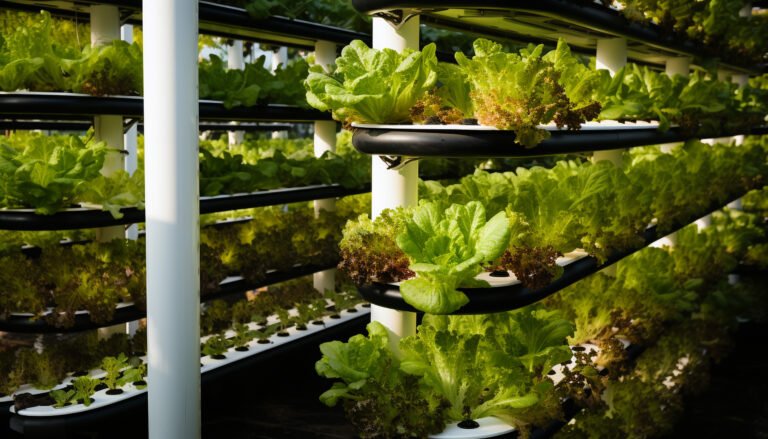
How Does Vertical Farming Work?
A Step-by-Step Guide
With increased urbanization and environmental pressures pushing agriculture to the breaking point, vertical farming is gradually emerging as a game-changer. But what’s the process behind it all? This innovative farming methodology works by growing crops in vertically stacked layers via the integration of the best technologies and sustainable methodologies often in indoor settings. It is now time to demystify the mechanisms of this modern way of agriculture.
The Core Concept of Vertical Farming
Vertical farming is about agricultural produce with minimum space. It grows crops upwards, not outwards, which minimizes the use of land compared to traditional farming. Advanced technologies are employed to create ideal conditions for plant growth, regardless of the time of year or weather conditions in a particular region.
Key Components of Vertical Farming
Various critical systems and technologies make vertical farming viable:
Growing Systems in Vertical Farming
Hydroponics:
Plants are grown in water solutions containing nutrients instead of growing them in soil. Their roots are submerged in water containing the necessary nutrients, giving them direct access to what they need for growth.
Aeroponics:
Plant roots are suspended in the air and periodically misted with nutrient solutions. This method uses less water than hydroponics and is known to boost faster growth.
Aquaponics:
This system combines fish farming with hydroponics. The waste produced by the fish serves as natural nutrients for the plants, while the plants filter the water for the fish, creating a sustainable closed-loop ecosystem.
Essential Technologies in Vertical Farming
LED Lighting for Year-Round Growth
– LED lights mimic sunlight, offering specific wavelengths that plants require for photosynthesis. These can be tailored to provide optimal conditions for various types of plants at various stages in their development.
Climate Control
– Vertical farms have to create perfect conditions for the plants, keeping temperature, humidity, and CO2 levels within strict limits. All these factors are continuously measured with the help of advanced sensors in real time.
Automated Systems for Efficiency
– Automation also features significantly in vertical farming. The robots and conveyors plant, water, harvest, and package the greens, replacing human labor and increasing efficiency.
AI and Data Monitoring for Smarter Farming
-Various sensors and AI mechanisms monitor plant health, growth rates, and nutrient levels. These tools ultimately help farmers make informed decisions, optimize the efficient use of resources, and predict harvest yield.
The Vertical Farming Process: Step by Step
The following is generally the step-by-step growth of crops in a vertical farm:
1. Planting Seeds in Growth Medium
Seeds get planted in a growing medium like sponges or other types of biodegradable growth pods placed in trays/container types for the germination processes.
2. Germination in Controlled Environments
Seeds are reared under controlled conditions until they sprout, usually in specialized germination rooms.
3. Growing to Maturity in Vertical Racks
After sprouting, the seedlings are transferred to vertical racks or towers, where they grow to maturity under controlled lighting and nutrient systems.
4. Automated or Manual Harvesting
Once the crops reach maturity, they are harvested, often with automated systems.
5. Packaging and Local Distribution
Packaging and distribution, which are usually within the local urban area, reduce time and potential emissions from transportation.
Best Crops for Vertical Farming
Crops that generally thrive in vertical farming include those that grow rapidly and have significant market value. Some common products include:
Leafy greens & hurbs: such as lettuce, spinach, kale basil, mint, and cilantro
Microgreens Strawberries
Specialty vegetables: cherry tomatoes and peppers are examples
Future Possibilities: Staple Crops Like Rice & Wheat
Vertical Farming and Sustainability
Vertical farming revolves around minimizing resource use when compared to conventional agriculture. For example:
Water Consumption:
Vertical farms use a maximum of 95% less water through re-use and minimizing wastage
Conservation of Land:
Grow in the vertical direction minimizing the use of land; hence it is practicable to get appropriate lots in the urban heart.
Lower Emissions:
Situating farms near consumption centers minimizes transportation emissions.
Final Thoughts on Vertical Farming’s Future
Vertical farming merges science, technology, and sustainability to change the world one crop at a time. By creating controlled environments and using innovative techniques, vertical farming provides a reliable way to produce fresh, pesticide-free crops year-round, even in urban centers. As the technology evolves, vertical farming promises to play a crucial role in addressing food security and environmental challenges for generations to come.
Most Economical Crop for Growing in Vertical Farming

Vertical farming has emerged as a revolutionary way to produce food in urban areas, making the most of limited space while reducing environmental impact. However, one of the key factors for success in vertical farming is selecting the right crop. To maximize profitability and sustainability, growing crops that yield high returns with relatively low inputs is essential. Below, we’ll explore the most economical crop to grow for vertical farming and why it stands out.
Why Crop Selection Matters
Vertical farming requires an enormous up-front investment in infrastructure, energy for lighting and climate control, and labor. Growing high-value crops that mature quickly and have a steady demand can offset these costs. Also, crops that are naturally adapted to indoor conditions and don’t need much space will perform well within vertical farming systems.
Why Microgreens Are the Best Crop for Vertical Farming
Microgreens are widely considered the most cost-effective crop to grow in vertical farming. These young, nutrient-dense plants are harvested at an early stage of development, usually within 7-21 days, which makes them very fast and efficient to produce. Here’s why they’re a top choice:
- High Market Value: Microgreens are in high demand for their health benefits and bright flavors by chefs and health-conscious consumers—each variety can sell for $20–50 per pound, depending on the type.
- Quick Turnaround: Shortening the growth cycle means more harvests within a short period, increasing the output per square foot.
- Low Space Requirements: Microgreens can be grown at a high density, allowing growers to maximize vertical space and yield more from less land.
- Low Energy and Resource Use: Compared with fruiting crops, microgreens require less light energy and low nutrient inputs, saving labor and operation costs.
Other Economical Crops for Vertical Farming
While microgreens top the list, the following crops are also quite economical for growing vertically:
Leafy Greens: A Fast-Growing and Profitable Vertical Farming Crop
These are the mainstay of vertical farms because they are in high demand, have fast growth cycles (30-40 days), and are amenable to hydroponic cultivation.
High-Value Herbs That Thrive in Vertical Farming
Culinary herbs have a high market value and do very well in controlled environments. Basil is probably the most popular herb for vertical farming.
Strawberries: A Lucrative but Resource-Intensive Option
Although more resource-intensive than greens, strawberries are a lucrative choice due to the year-round demand and high retail prices.
Mushrooms: A Low-Light, High-Profit Vertical Farming Choice
More and more specialty mushrooms, typically oyster and shiitake varieties, are being cultivated in vertical farms. They need minimal lighting and can be grown in unique setups like stacked trays.
Key Factors for Profitable Vertical Farming
Although crop selection is a critical consideration, several other factors determine profitability in vertical farming:
Understanding What Your Market Needs
Grow what consumers want and restaurants demand locally.
Reducing Energy Costs for Maximum Profitability
Energy-efficient LED grows lights and renewable energy sources will help to reduce electricity costs.
How Automation Can Cut Costs and Boost Efficiency
Automate planting, harvesting, and monitoring with automated systems to reduce labor costs.
Scaling Your Vertical Farm for Long-Term Success
Start small and scale up as you perfect your process and gain market traction.
Final Thought
Microgreens are the most affordable crop for vertical farming due to their high value in the marketplace, fast growth rate, efficient use of resources, and space. However, leafy greens, herbs, strawberries, and mushrooms can also be good choices, depending on the target market or operational capacity you will be setting up. Optimizing crop choices and practices could potentially maximize your economic viability, therefore contributing positively to the cause of creating sustainable food systems with vertical farming.
Is Vertical Farming the Future of Agriculture?
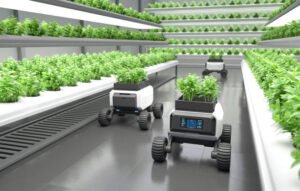
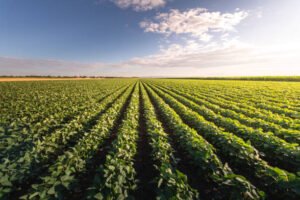
The bigger the population and the more rapid the urbanization, the more difficult it will be to produce the amount of food needed. It is due to this reason that vertical farming has been highly touted as representing the future of agriculture because crops are grown on vertically inclined surfaces or stacked layers in a controlled environment. But is it the panacea for our agricultural challenges? Let’s take a look.
Understanding Vertical Farming: A Modern Agricultural Revolution
Vertical farming is a high-tech version of growing crops indoors using hydroponics, aeroponics, and aquaponics. The method allows farmers to grow food throughout the year, regardless of weather patterns, and is well adapted to urban areas where arable land is scarce.
How Vertical Farming Will Shape the Future of Agriculture
While it will not completely supplant traditional farming, vertical farming is well-placed to play a substantial role in the future of food production. Here’s why:
Ensuring Food Security in Cities with Vertical Farming
With the expected increases in urban populations, vertical farming can help ensure that fresh, locally grown produce is available within the city. This reduces reliance on long supply chains and minimizes food waste during transportation while providing urban residents with a reliable source of healthy food.
A Climate-Proof Farming Solution
Climate change is interfering with the traditional ways of farming because of droughts, floods, and unpredictable weather patterns; vertical farming provides a stable alternative. Crops that are grown indoors remain unaffected by outside factors, and therefore their yields remain consistent despite environmental challenges.
The Cutting-Edge Technologies Powering Vertical Farming
Innovations in farming technologies are speeding up the adoption of vertical farming. Automated systems can monitor and adjust factors like light, temperature, and humidity in real-time to optimize growth conditions. Similarly, artificial intelligence and machine learning are being applied to predict yields, detect possible problems, and make operations efficient.
Why Vertical Farming Supports a Greener Future
It would eventually bring a sustainable global effort into place. The benefits of using less water, preventing soil degradation, and eliminating the need for harmful pesticides mean that this method is a cleaner and greener way of producing food. In addition, urban vertical farms can also incorporate renewable energy sources into their operations, further reducing their carbon footprint.
How Vertical Farming Boosts Local Economies
By creating urban farming hubs, vertical farming provides employment opportunities in technology, agriculture, and logistics. This will also help local communities to be self-sufficient in food production, lessening the reliance on importation and fostering economic growth.
Expanding Crop Possibilities in Vertical Farming
While today leafy greens and herbs are the most common products from vertical farms, new techniques are being developed for growing a much wider variety of crops: fruits, flowers, and even medicinal plants. This can lead to the development of a much more resilient and diverse food system.
Conclusion
Vertical farming is a promising complement, not a full replacement, to traditional husbandry. It contributes to efficient, sustainable, and local food production, helping to meet the many challenges posed day by day by urbanization and climate change. However, big cost, energy, and scaling problems still need to be overcome for the industry to become mainstream. More innovations and investments will probably make vertical farming one of the cornerstones of modern agriculture that will sustainably feed the growing world.
Is Vertical Farming Something to Do at Home?
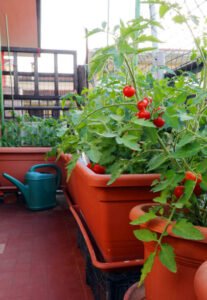
Vertical farming is a contemporary way of growing crops in vertically stacked layers or inclined structures. Originally, it had been practiced solely on a large scale for commercial purposes, but with the improvement in technology and increasing interest in sustainable living, it has been tailor-made for home enthusiasts. Here is everything you want to know on the subject.
Why You Should Start Vertical Farming at Home
1. Maximizing Space with Vertical Farming
Those with small outdoor spaces, like apartment residents or city folks, will find vertical farming ideal. You can still grow so many crops in tiny spaces by using shelves, wall-mounted systems, or stand-alone vertical towers.
2. Enjoy Pesticide-Free, Nutritious Food
Growing your food ensures that you get fresh, pesticide-free produce. It will help in improving your nutrition and saving money from your grocery list.
3. Eco-Friendly Farming at Home
Home vertical gardening reduces your carbon footprint since the produce is free from transportation and packaging. Additionally, it has significantly less need for water compared to a garden bed layout.
4. Grow Fresh Produce All Year Long
With indoor setups, you can grow food year-round, regardless of the weather.
Best Crops for Home Vertical Farming
While some crops work better in larger-scale vertical farms, many do quite well in a home. The popular choices are:
– Leafy Greens: Lettuce, spinach, kale, and arugula are fast-growing and don’t take up too much space.
– Herbs: Basil, mint, cilantro, and parsley are good for small systems and make great additions to a variety of home-cooked dishes.
– Microgreens: These nutrient-dense plants are simple to grow and harvest in 1-3 weeks.
– Strawberries: With the right care, strawberries will thrive in vertical systems and offer a sweet payoff.
– Tomatoes and Peppers: Compact varieties of these fruits can be grown in slightly larger setups.
Step-by-Step Guide to Starting Your Home Vertical Farm
1. Selecting the Best Vertical Farming System for Your Home
Pick a vertical farming system that suits your space and budget. Options include:
-Wall-Mounted Planters: Space-Saving Vertical Farms
-Tower Gardens: High-Yield Vertical Farming
-DIY Shelves: A Budget-Friendly Vertical Farming Solution
-Hydroponic & Aeroponic Kits: Efficient Soilless Farming
2. Finding the Perfect Location for Your Vertical Farm
Indoors: pick a place with enough natural light or set up LED grow lights. Ensure it is well-ventilated so your crops will not be predisposed to mold and pests.
3. Setup Growing medium
This type of farming can be done with soil, hydroponics (water-based), or aeroponics (air/mist-based). Hydroponic and aeroponic systems are quite popular for home use since they are efficient and clean.
4. Caring for Your Vertical Farm: Tips for Success
Keep an eye on light, temperature, and levels of water. Most systems are low-maintenance but do require attention to ensure plants thrive.
5. Begin with Easy-to-Grow Crops
Begin with easy-to-grow crops, such as herbs or lettuce, before expanding into more complicated plants.
Challenges and Solutions in Home Vertical Farming
1. Upfront Investment vs. Long-Term Savings
It takes an initial investment to set up a vertical farm, especially with hydroponic or automated systems; however, it would eventually lead to long-term savings on groceries.
2. Overcoming the Learning Curve: Tips for Beginners
It does, however, take some trial and error to understand how to balance light, water, and nutrients properly—especially for beginners.
3. Managing Energy Use in Indoor Vertical Farming
Indoor systems using grow lights can hike the electricity bill. Using energy-efficient LED grow lights can somewhat offset this.
Conclusion
Home vertical farming is such a good way to grow your food, save space, and contribute to sustainable living. Whether you’re an inexperienced gardener or an experienced green thumb, this method will give you a realistic solution for creating fresh, healthy food all year round. With just a small amount of effort and investment, your home can be turned into a flourishing vertical farm where even the smallest space is turned into a green oasis.
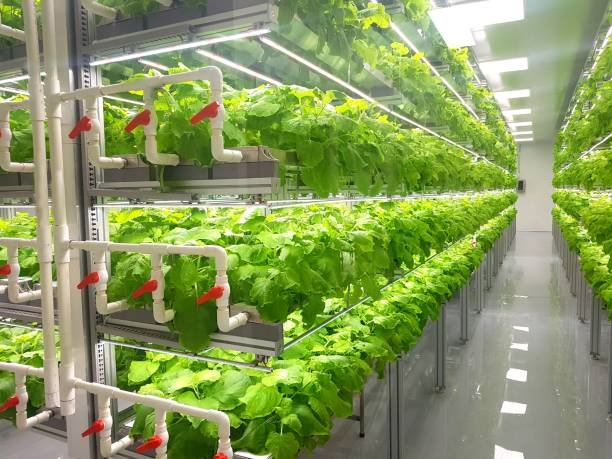
How is Vertical Farming Sustainable?
Vertical farming, in light of growing environmental challenges, came into prominence as a sustainable agriculture technique. In rethinking the method of food production, it tackles critical issues like land scarcity, water conservation, and greenhouse gas emissions. Here’s a closer look at how vertical farming promotes sustainability.
Maximizing Land Efficiency with Vertical Farming
Traditional farming requires vast tracts of arable land, contributing to deforestation and habitat destruction. Vertical farming, however, utilizes vertical space, allowing crops to be grown in stacked layers within controlled environments. This innovative approach:
– Less Land, More Food: How Vertical Farming Maximizes Space
-Protecting Ecosystems: Vertical Farming’s Role in Conservation
-Bringing Farms to the City: Vertical Farming in Urban Areas
How Vertical Farming Conserves Water More Efficiently
Agriculture represents about 70% of all global freshwater usage. Advanced methods of vertical farming include hydroponics, aeroponics, and aquaponics, which have been known to use as much as 95% less water compared to traditional farming. These systems:
– Re-circulate water in a closed-loop system with minimal waste.
– Eliminate water loss through evaporation and runoff.
– Limit the pollution of water sources by eliminating the use of pesticides and herbicides.
Reducing Food Miles: How Vertical Farming Cuts Emissions
Vertical farms are often located closer to consumers within city limits. This closeness:
– Reduces carbon emissions that come with transporting produce.
– Eliminates the need for large amounts of cold storage and excessive packaging.
– Ensures produce is fresher, lasts longer, and food waste is minimized.
Vertical Farming: A Chemical-Free Approach to Food Production
Conventional farming normally involves the usage of pesticides and herbicides, which help protect the crops from disease and infestation. Vertical farming puts the crops in a controlled environment whereby:
– Plants are protected from pests outside and, therefore, avoid the use of harmful chemicals.
– Consumers get more healthy and chemical-free vegetables and other produce.
Innovative Technologies Making Vertical Farming Energy-Efficient
Vertical farming is highly energy-consuming concerning light and climate management; however, technological advancements make things much better:
– LED Lighting: Modern LEDs use far less energy, and their spectrum can be tuned to those wavelengths that best stimulate plant growth.
– Renewable Energy: Most of the vertical farms are integrating solar, wind, or other renewable energy sources in powering their operation.
– Automation: Automating systems will optimize resource utilization to minimize waste and further improve energy efficiency.
Growing Fresh Produce Year-Round with Vertical Farming
Vertical farming, under taking place in indoor controlled environments, is not vulnerable to seasonal fluctuations and severe weather conditions. This consistency:
– Provides a stable supply of fresh produce all year round.
– Limits imports of fruit and vegetables with a high C. footprint.
Can Vertical Farming Help Capture Carbon and Improve Air Quality?
Some vertical farms, through incorporating technologies in carbon capture, attempt to decrease levels of CO2 in the atmosphere. In addition, there is;
Preservation of natural forests is made possible through vertical farming upkeep of important carbon sinks, as well as helping to reduce the urban heat island effect and improve air quality courtesy of urban vertical farming.
How Vertical Farming Helps Reduce Food Waste
Conventional supply chains lose much food at their transportation, storage, and distribution points. In addition, because food from vertical farms is produced very near to the consumers, there is a reduction in these losses. The fact that optimal growing conditions have been employed limits crop failure incidents. Further, any excess produce in a vertical farming community can be repurposed or donated.
Although vertical farming presents several advantages in terms of sustainability, challenges regarding initial high investment costs, energy consumption, and scalability still exist. Yet all these are being overcome one by one through continuous innovation. For example,
– The integration of renewable energy reduces the carbon footprint of vertical farming.
– Economies of scale and government incentives make vertical farming more affordable and approachable.
Conclusion
Vertical farming epitomizes the next leap toward sustainable agriculture. Optimizing land, water, and energy use while minimizing environmental impact keeps up with the world’s efforts on climate control and food security. As technology advances and awareness increases, vertical farming is going to play a more significant role in building a more sustainable and resilient food system.
A Guide to Vertical Farming Equipment
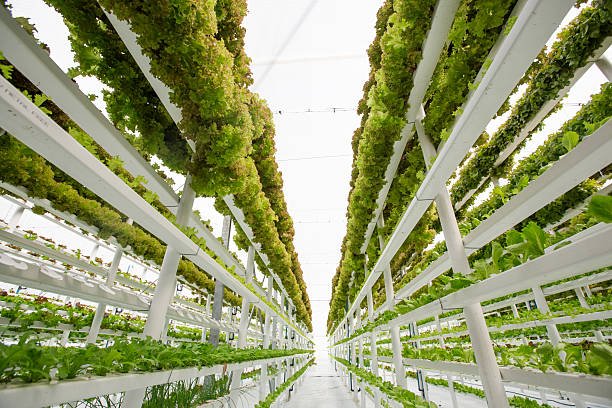
Vertical farming is revolutionizing agriculture by growing crops in vertically stacked layers within controlled environments. This innovative method requires specialized equipment and technology to achieve maximum efficiency, resource conservation, and high-quality yields. If you are setting up a vertical farm, then knowing the basic equipment is very important to ensure success.
Essential Grow Systems for Vertical Farming
The grow system forms the core of a vertical farm, establishing how the crops will be oriented and cultivated. The most common growing systems include:
Hydroponic Systems – The Soil-Free Future of Farming

Plants grow without soil, with nutrients supplied by water. Popular designs generally include NFT or Nutrient Film Technique, Deep Water Culture, and Drip Irrigation Systems.
Aeroponic Systems – Maximizing Growth with Minimal Water

In these systems, plant roots hang in the air and are sprayed with a nutrient solution. Aeroponics is extremely efficient in the use of water and encourages healthy plant growth at a very rapid pace.
Aquaponic Systems – A Sustainable Fusion of Fish and Crops

A cross between aquaculture (rearing fish) and hydroponics, where aquaponics utilizes fish waste as a natural fertilizer for plants while plants clean the water for the fish.
Advanced Lighting Systems for Indoor Vertical Farms
Most vertical farming occurs indoors or in low-light environments; thus, plants need artificial lighting to grow. Modern vertical farms use the following types of equipment:
Why LED Grow Lights Are the Smartest Choice for Vertical Farming?
LEDs have custom spectrums tailored for specific plant needs. They also have high energy efficiency and long service lives.
Full-Spectrum Lighting – Does Your Farm Need It?
They mimic natural sunlight and are intended to support the stages of growth in plants, from germination to flowering.
Climate Control Equipment – Maintaining Optimal Growing Conditions
Vertical farming requires maintaining optimal environmental conditions. Important Climate Control Tools include:
How HVAC Systems Help Control Temperature and Humidity
HVAC systems have a vital part to play in vertical farming so that precise temperature, humidity, and air management are maintained. By providing ideal environmental conditions, HVAC systems enable the growth of plants to be maximized and crop yield improved. Energy-saving solutions are facilitated by advanced HVAC technologies, with consistent climates maintained in controlled environment agriculture for all-year-round production.
Preventing Mold and Disease with Dehumidifiers
Dehumidifiers play a crucial role in vertical farming since they regulate humidity to prevent mold, mildew, and other pathogens. Excessive humidity may inhibit plant health and reduce yields; hence, combining dehumidification with HVAC systems keeps things in balance. Proper management of moisture not only safeguards the crops but also enhances energy efficiency and reduces costs.
Boosting Photosynthesis with CO₂ Generators
CO₂ generators have a significant function in vertical farming by enhancing photosynthesis and stimulating plant growth. Within controlled environments, the natural CO₂ levels may be insufficient; thus, the provision of supplemental CO₂ enrichment can lead to high crop yields and reduced growth cycles. Proper integration and regulation of CO₂ systems ensure optimal concentrations, thereby contributing to the overall efficiency and productivity of vertical farms.
Proper Water and Nutrient Management for Maximum Crop Yield
Efficient water and nutrient management is vital for the health of plants and sustainability. The common systems include:
– Automated Irrigation:
Automated irrigation systems provide plants with a constant water supply without any human effort. Automated systems use sensors to monitor the water content in the soil and supply specific quantities of water according to current demands. This minimizes water wastage, avoids overwatering, and also conserves labor expenses. Drip irrigation and aeroponics are the most common techniques used in vertical farming for water conservation.
– Nutrient Delivery Systems:
Sophisticated nutrient delivery systems, including hydroponic and fertigation systems, supply plants with precisely the nutrients required at varying growth stages. These systems combine and administer nutrient-rich solutions using controlled dosing, promoting even plant nutrition. They also prevent nutrient imbalances that can stunt growth or trigger deficiencies, resulting in increased yields and crops of improved quality.
Monitoring and Automation Technology
The vertical farms of today use smart technology to improve efficiency and decrease manual labor:
– Sensors:
Sophisticated sensors continuously monitor environmental variables such as temperature, humidity, CO₂, pH, and water nutrient levels. The sensors give real-time input to farm management systems so that changes can be implemented very quickly. For example, a drop in humidity can trigger misting systems to maintain the optimal moisture level for plants.
– Automated Systems:
Automated systems utilize artificial intelligence (AI) and machine learning to manage key factors such as lighting, watering, and climate control. Smart LED growth lights can change intensity and spectrum depending on the growth stages of plants, and automated HVAC (Heating, Ventilation, and Air Conditioning) systems provide optimum airflow. This removes human error, increases accuracy, and provides consistent crop growth.
– Farm Management Software:
Advanced farm management software integrates data from sensors and automation systems to provide real-time feedback on plant health, growth stages, and resource usage. The software allows farmers to track yield patterns, detect plant diseases sooner, and optimize farming processes for better efficiency. Cloud-based systems also make remote monitoring possible, whereby farmers can monitor their vertical farms from a distance.
Racking Systems
Racking or shelving systems exploit vertical space and thus allow the growing of multiple layers of crops within a limited area. Structures are:
– Modular:
Modular racking systems are both scalable and versatile, allowing farms to reorganize or scale up based on different crop needs. They can be engineered to accommodate different plant sizes and outfitted with built-in lighting, irrigation ducts, and climate control systems.
– Durable:
Durability is paramount when it comes to racking systems because they must support the weight of plants, water systems, and equipment. High-quality materials like stainless steel or coated aluminum are resistant to rust, water damage, and wear, ensuring longevity and stability in a high-humidity growing environment.
Water Filtration Systems – Ensuring Purity & Sustainability
Clean water is required for plant health, nutrient uptake, and productivity in vertical farming. Impurities like heavy metals, chlorine, and pathogens are removed by advanced filtration systems to avoid crop disease. Typical systems include:
Reverse Osmosis (RO):
Dissolved solids and impurities are removed by a semipermeable membrane, giving quality water.
Ultraviolet (UV) Sterilization:
Utilizes UV light to destroy viruses and bacteria and filter the water.
Recirculating Filtration:
Closed-loop water recycling systems are used on some farms that filter and recycle water, reducing consumption and minimizing waste.
Through water filtration and recycling, vertical farms are able to drastically reduce their environmental footprint while still providing ideal growing conditions.
Planting and Harvesting Tools
Vertical farming requires specialized tools for planting, pruning, and harvesting, such as:
– Seed Trays and Germination Equipment:
Proper germination chambers and seed trays provide controlled conditions where seeds germinate in optimal conditions. The systems keep temperature and moisture levels constant, boosting germination rates and promoting even plant growth.
– Automated Harvesting Machines:
Conveyor belts and robotic arms are mechanized harvesting systems that mechanize harvesting through cutting the crop in the correct stage of maturity with a clean cut, accurately and swiftly. Mechanized harvesting tools save labor, shorten the duration of harvesting, and are not injurious to sensitive plants such as leafy greens and herbs. Plant and harvest automation not only increases efficiency but also improves the consistency of the products and reduces labor costs.
Post-Harvest Handling – Storage and Packaging Solutions
The post-harvest handling must be done in an efficient way to maintain its freshness and quality. The equipment includes:
– Cold Storage Units:
Temperature-controlled storage maintains the nutritional content and shelf life of produce as it was when freshly harvested. Produce is stored in walk-in coolers or refrigerated storage rooms at optimum temperatures (usually 35°F to 45°F) to retard spoilage and water loss.
– Packaging Machines:
Automated packaging machines make the sorting, weighing, and packing process more efficient. The machines are able to seal produce in breathable, biodegradable packaging that minimizes plastic waste and increases shelf life. Vacuum sealing and modified atmosphere packaging (MAP) technologies allow for freshness to be maintained by managing oxygen and humidity levels inside the package. By utilizing advanced storage and packaging systems, vertical farms can reduce food waste, improve distribution efficiency, and meet consumers’ demands for fresh, high-quality produce.
Renewable Energy – Powering Vertical Farms Sustainably
To minimize the environmental impact, most of the vertical farms are equipped with renewable sources of energy, including:
– Solar Panels:
Solar power is an extremely effective method of powering HVAC, LED grow lights, and automation systems. A few farms utilize solar arrays or rooftop photovoltaic panels to produce electricity, which minimizes the use of fossil fuels and lowers energy expenses. Excess solar power can be stored for use at night with the help of advanced battery storage systems.
– Wind Turbines:
Small wind turbines can provide supplementary energy needs in high wind availability areas by producing clean and renewable energy. Wind-solar hybrid systems can provide enhanced power supply without any interference in farm operation. By utilizing renewable energy sources, vertical farms can reduce their carbon footprint while enhancing long-term profitability and sustainability.
Vertical farming equipment is the backbone of this innovative agricultural process, which enables efficient, sustainable, and high-quality food production. Its initial investment may be very high, but with the advancement of technology and automation, vertical farming has become much more accessible and affordable. By understanding and investing in the right equipment, farmers can play a leading role in shaping the future of sustainable agriculture
Best Vertical Farming Companies
Vertical farming is a rapidly growing industry, as this method of farming is more sustainable and efficient in producing food. Some companies pioneer the charge with leading-edge technology and innovative approaches. Here are a few of the best vertical farming companies around the world.
AeroFarms (More details)
Headquarters:
Newark, New Jersey, USA
About:
AeroFarms is one of the pioneers in vertical farming and has a patented aeroponic growing system. Its technology uses mist to get nutrients into plant roots, which provides for faster growth and higher yields. The company grows a variety of leafy greens and herbs for major retailers and food service providers.
What Sets Them Apart:
– Sustainable practices, using 95% less water than traditional farming.
– Advanced AI systems to monitor plant health and optimize growth.
Plenty (More details)
Headquarters:
San Francisco, California, USA
About:
Plenty is revolutionizing vertical farming with its high-tech, modular farming systems. The company’s approach integrates robotics and AI to ensure precision farming. Plenty of farms grow produce like lettuce and kale that are distributed to grocery chains like Walmart.
What Sets Them Apart:
– Focus on scalability and cost-efficiency.
– Strong alliances with retail giants to reach more consumers.
Bowery Farming (More details)
Headquarters:
New York City, New York, USA
About:
Bowery Farming combines vertical farming with machine learning and automation. The company places its smart farms near urban centers to reduce transportation emissions and provide fresher produce to consumers.
What Sets Them Apart:
– Application of proprietary software, BoweryOS, to monitor the farms in real-time.
– Commitment to sustainable, pesticide-free farming practices.
Kalera (More details)
Headquarters:
Orlando, Florida, USA
About:
Kalera focuses on hydroponic farming for growing high-quality leafy greens and microgreens. The company operates a network of vertical farms across the U.S. and internationally to supply locally grown produce with a minimal environmental impact.
What Set Them Apart:
– The proximity of the vertical farms to cities ensures that products arrive fresh and local.
– Specialization in nutrient management for the highest quality crops.
Infarm (More details)
Headquarters:
Berlin, Germany
About:
Infarm is focused on modular, vertical farming units that can be installed in supermarkets, restaurants, and distribution centers. Their model brings farming directly to the consumer, eliminating much of the complexity of the supply chain.
What Sets Them Apart:
– Decentralized farming model for hyper-local produce.
– Focus on reducing food miles and waste.
Crop One Holdings (More details)
Headquarters:
Millis, Massachusetts, USA
About:
Crop One is a leading hydroponic vertical farm producing fresh greens under the brand FreshBox Farms. The company emphasized technology-driven farming to realize consistency and high yields.
What Sets Them Apart:
Partnership with Emirates Flight Catering to supply fresh produce for airline meals.
Advanced data analytics for precision agriculture.
Urban Crop Solutions (More details)
Headquarters:
Waregem, Belgium
About:
Serving large-scale producers and smaller operations, Urban Crop Solutions designs and delivers turnkey solutions for fully automated vertical farming. The company helps in the area of growing crop varieties and climate.
What Sets Them Apart:
– Research and development focus
– Global reach with installation in several countries.
Mirai (More details)
Head Office:
Tokyo, Japan
About:
Operating some of the world’s largest vertical farms in leafy greens and herbs, Mirai has taken the lead in the new field of farm technology. The leading-edge use of LED lighting by this company, coupled with efficient growing techniques, has already set new limits for productivity.
What Sets Them Apart:
– High-tech integration into energy efficiency
– Strong footprint in the Asian market
Sky Greens (More details)
Headquarters:
Singapore
About:
Sky Greens has developed one of the world’s first low-carbon hydraulic vertical farming systems. Their approach, by using natural sunlight, has received international accolades for its sustainability and innovative spirit.
What Sets Them Apart:
– Patented A-Go-Gro vertical farming system
– Using natural sunlight to reduce energy consumption
Freight Farms (More details)
Headquarters:
Boston, Massachusetts, USA
About:
Freight Farms turns shipping containers into vertical farms, making it possible to grow in cities and other underserved areas. Their modular design allows for easy scalability and flexibility for growers of all sizes.
What Sets Them Apart:
– Compact, portable farming units.
– Focus on empowering small-scale farmers and entrepreneurs.
These companies are at the forefront of vertical farming technology and are using novel solutions to solve modern agriculture problems. With the power of technology and sustainable practices, they are shaping the future of food production and contributing to a more resilient and eco-friendly food system. As the industry continues to evolve, these leaders in vertical farming will no doubt inspire new developments and opportunities.
Vertical Farming Towers: The Future of Sustainable Agriculture
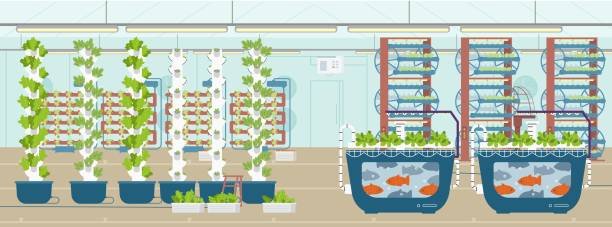
Vertical farm towers are changing the way food is being produced and offer a sustainable solution to traditional farming issues. Through the utilization of vertically stacked layers, these futuristic structures maximize space and are intended for use in urban locations or where arable land is limited.
What is a Vertical Farming Tower?
Vertical farming is the practice of cultivating crops in vertically stacked layers. Such systems also employ sophisticated technologies like hydroponics, aeroponics, and aquaponics, which do away with soil but maximize water and nutrient supply to crops. The majority of such farms are indoor facilities, either in greenhouses or climate-controlled structures, where the conditions are constant throughout the year.
Key Features of Vertical Farming Towers
Space Efficiency
Vertical farms utilize space vertically, and through this method, farmers can grow far more crops in a smaller space than they can with traditional farming methods. This is especially helpful in cities where land is scarce and expensive. By stacking crops in multiple tiers, vertical farming towers can have the highest yield per square foot, and thus food production becomes more efficient while lessening land-use pressure on rural agricultural land.
Water Conservation
Vertical farm towers utilize as much as 95% less water than traditional farming techniques thanks to their sophisticated water recycling and precision delivery technology. Hydroponic and aeroponic systems only utilize water as required, with very little waste. The systems also recycle any excess water, preventing pollution and runoff, and conserving this valuable resource. This renders vertical farming a perfect solution for areas where water is in short supply.
Energy-Efficient Lighting
LED grow lights play an important role in vertical farming as they supply plants with precise wavelengths of light for maximized photosynthesis and growth. The lights use far less electricity than conventional lighting and can be set to deliver customized light spectrums to various plant growth stages. Advancements like intelligent LED lighting modulates brightness and spectrum according to the real-time needs of plants, which improves energy efficiency and lowers operational expenditure.
Controlled Environment Agriculture (CEA)
Vertical farm towers are cultivated in controlled conditions where temperature, humidity, and CO₂ levels are precisely controlled. This allows farmers to create the best conditions for growth all year round, leading to higher growth rates and yields. CEA also reduces the risk of pests and disease, eliminating the need for poisonous pesticides and yielding consistent high-quality produce irrespective of the season.
Benefits of Vertical Farming Towers
Sustainability
Vertical farm towers promote sustainable farming by substantially conserving water use, avoiding the use of chemical pesticides, and lowering transport emissions. Since the farms are mostly situated on the outskirts of cities, they minimize the environmental cost linked to long-distance food transportation. This lowers carbon footprints, reverses climate change, and boosts eco-friendly agriculture.
High Productivity
Through multiple tiers of stacking and resource utilization efficiency, vertical farm towers can achieve greater yields of crops per square foot compared to conventional agriculture. With environmental conditions strictly regulated, crops also mature at a faster rate as well as uniformity, minimizing the planting-harvest cycle as much as possible. This optimizes productivity and enables farmers to achieve it sustainably under pressures of increased food consumption.
Year-Round Farming
Unlike traditional agriculture, which depends heavily on seasons and weather, vertical farming towers allow for year-round round-the-clock production. Controlled conditions protect crops from excessive temperatures, dry spells, and unpredictable climatic fluctuations, thus ensuring consistent food supply and stable pricing for consumers. This is particularly beneficial for produce that is normally seasonal, providing fresh produce even during the off-season.
Urban Agriculture
Vertical towers enable the growing of fresh produce directly in the center of cities, cutting down on transport costs significantly and providing consumers with fresher food. It also increases local food security as it makes cities independent in terms of food production. Urban agriculture also provides opportunities for community involvement, education, and jobs, linking individuals to their sources of food.
Crops Grown in Vertical Farming Towers
The crops ideally suited for growing in vertical farming towers include:
- Leafy greens: Lettuce, spinach, kale
- Herbs: Basil, cilantro, mint
- Microgreens
- Strawberries
- Tomatoes
- Peppers
These crops thrive in controlled environments and benefit from hydroponic and aeroponic growing techniques, which ensure optimal growth conditions and high yields.
Types of Vertical Farming Towers
Hydroponic Towers
The crops are grown in hydroponic towers in an aqueous-based nutrient solution without any soil. This enhances the supply of nutrients and aeration to the roots, and this leads to rapid growth and better yields. Hydroponics are highly water-efficient because the water is recycled many times before it is disposed of. Hydroponic systems are widely used in the production of leafy vegetables, herbs, and fruiting plants.
Aeroponic Towers
Aeroponic systems suspend the roots of plants in the air and spray them with a nutrient solution in the form of a fine mist, subjecting them to maximum oxygen. This method of growth accelerates plant growth and uses 90% less water than conventional methods. There is no soil, so there is no danger of soil-borne disease, and crops are cleaner and healthier. Aeroponics is particularly suited to the cultivation of greens, herbs, and strawberries.
Aquaponic Towers
Aquaponics merges aquaculture (fish farming) and hydroponics to form a closed, self-sustaining system. Fish provide waste, which is a natural fertilizer for plants, and plants filter and recycle the water for the fish. The closed system minimizes waste, increases biodiversity, and provides a sustainable growing cycle. Aquaponic towers can be utilized for the production of leafy greens and herbs paired with edible fish such as tilapia.
Challenges of Vertical Farming Towers
High Initial Costs
Establishing vertical farm towers involves a lot of investment in terms of LED lighting, climate control systems, automation, and infrastructure. Such an expense can be prohibitively expensive for start-ups or small-scale farmers. Nevertheless, as technology continues to evolve and economies of scale are realized, start-up expenses are bound to come down, enabling more people to set up vertical farming.
Energy Use
Although automation and LED lighting make it more efficient, vertical farms use plenty of energy, particularly for commercial farming. Vertical farms need electricity for lighting, climate control, and water circulation, which results in expensive operating costs. To circumvent this, the majority of vertical farms are harnessing solar panels, wind turbines, and energy-efficient technology to minimize their reliance on traditional power.
Specialized Skills
Vertical farming demands hydroponics, automation, and environmental control system expertise. It necessitates training in nutrient management, sensor monitoring, and AI-based decision-making. As vertical farming grows, education and training programs are developing to provide growers with relevant skills to thrive.
Innovations and Future Trends
AI Integration
Artificial intelligence (AI) is revolutionizing vertical farming by enabling real-time monitoring and optimization of crop growth. AI-powered sensors analyze plant health, adjust lighting, and detect issues such as nutrient deficiencies or diseases before they impact yields. This leads to higher efficiency, reduced waste, and improved profitability.
Renewable Energy
To reduce energy costs and carbon footprints, vertical farms are integrating renewable energy sources such as solar panels and wind turbines. These systems help offset electricity consumption and make vertical farming more environmentally sustainable. Innovations like battery storage solutions allow excess energy to be stored and used when needed.
Modular Designs
The development of modular, scalable tower systems allows vertical farms to adapt to different crop types, space constraints, and climate conditions. These prefabricated towers can be customized and expanded, making vertical farming more accessible for both small-scale growers and large commercial operations.
Conclusion
Leading in agricultural innovation, vertical farming towers address two of the most critical issues: food security and resource scarcity. By saving space, water, and energy, these structures pave the way for greener, more efficient farming practices. Whether for small-scale urban farms or large commercial enterprises, vertical farming towers offer a promising solution for the future of sustainable agriculture.
Vertical Farming vs. Traditional Farming: A Comparative Analysis
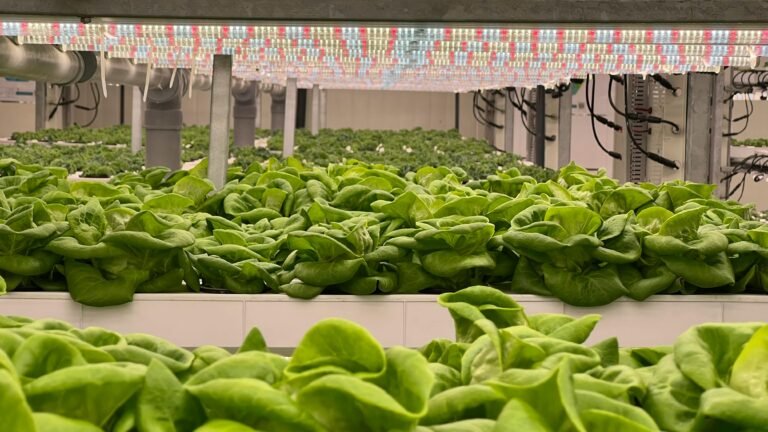
Agriculture has been the cornerstone of human civilization for centuries. However, due to the increasing world population and environmental issues, food production must be transformed to meet increased demand while simultaneously resolving sustainability challenges. Two specific farming systems, vertical farming, and traditional farming hold the key to resolving this dilemma. Although both aim to provide food, they differ in methodology, resource utilization, environmental impact, and scalability. This article discusses the key differences and benefits of each method.
What Is Vertical Farming?
Vertical farming is an innovative method of farming in which crops are grown in vertically stacked layers, typically indoors, under controlled conditions. It uses state-of-the-art technology like hydroponics, aeroponics, and artificial lighting to provide optimum growing conditions. Vertical farms are typically set up in urban areas and, hence, offer a viable solution for food production in densely populated areas.
What Is Traditional Farming?
Traditional farming is agricultural cultivation conducted outdoors on cultivable land. It depends on natural sunlight, soil, and seasonal climatic conditions. For centuries, it has been the most prevalent method of food cultivation and still plays a vital role in extensive food production.
Primary Comparisons
Use of Space
– Vertical Farming:
Vertical farming makes the most of the space by stacking crops. It’s particularly useful in cities where land is scarce. For instance, a vertical farm can yield the same as a conventional farm on a tenth of the land.
-Traditional Farming :
Conventional farming takes huge tracts of land to cultivate crops. Where there is sufficient space, as in rural areas, this is not a problem, but in space-constrained or urban environments, it’s a major constraint.
Water Consumption
– Vertical Farming:
Hydroponic or aeroponic cultivation is common in vertical farms, which can use up to 95% less water than conventional farming. The closed-loop systems recycle the water, thus being highly water-efficient.
– Traditional Farming:
Conventional agriculture depends substantially on rain or irrigation, and this tends to result in a waste of water. Evaporation and inefficient irrigation systems are among the causes of excessive water usage.
Energy Usage
– Vertical Farming:
One major disadvantage of vertical farming is that it utilizes energy-hungry technologies like LED grow lights and climate control systems. Renewable energy sources like solar panels, however, are being used more and more to eliminate this aspect.
– Traditional Farming:
Traditional Farming uses natural sunlight and requires less energy for normal operation. Large-scale farming operations, however, use fuel-powered machinery, which produces greenhouse gases.
Crop Yield and Quality
– Vertical Farming:
Vertical farms produce more per square foot due to the optimized environment and continuous production throughout the year. Crops in such an arrangement are typical of the same quality, pest-free, and require less pesticide application.
– Traditional Farming:
Traditional farming yields are subject to soil fertility, climate, and pest control. Some areas have high yields, while others are limited by environmental conditions.
Environmental Impact
– Vertical Farming:
Vertical farming minimizes the environmental footprint via lowered land use, water, and pesticide application. Yet, its energy-intensive use of artificial light and climate control can cancel out partial environmental gains.
– Traditional Farming:
The environmental impact of conventional farming includes deforestation, soil erosion, water pollution by fertilizers and pesticides, and greenhouse gases. All these are more in the case of industrial farming.
Cost
– Vertical Farming:
The large initial capital expense for setting up a vertical farm is needed as it involves sophisticated technology and infrastructure. But running costs can be offset by low water consumption, less transport needed, and higher crop value.
– Traditional Farming:
Traditional farming does not need much initial investment, particularly for small-scale farming. However, the recurring cost of water, fertilizers, pesticides, and equipment can be very high, particularly for large-scale farming.
Crop Variety
– Vertical Farming:
Vertical farming is currently best suited for leafy greens, herbs, and some fruits like strawberries. It is not very practical to scale up to staple crops like wheat or corn due to space and energy requirements.
– Traditional Farming:
Traditional farming supports a larger diversity of crops, including grains, fruits, vegetables, and livestock. It is required to cultivate staple foods all over the world.
Proximity to Consumers
– Vertical Farming:
Vertical farms are most often located in urban environments and reduce food transport distances from farm to plate. This reduces transportation emissions and gets the consumer fresher products.
– Traditional Farming:
Traditional farms are generally situated in rural areas, with longer transport distances to urban area consumers. This could affect the freshness and carbon footprint of the produce.
Benefits of Vertical Farming
– Year-round Production: Crops can be produced each day of the year regardless of the season.
– Lower Resource Consumption: Water, land, and pesticide use are much lower.
– Urban Integration: Vertical farms integrate food production within urban consumer space, eliminating transport emissions.
– Consistent Quality: Controlled environments ensure uniform crop safety and quality.
Benefits of Traditional Farming
– Diverse Crop Production: Can support a wide variety of crops and livestock.
– Scalability: Ideal for large-scale production of staple crops.
– Less Energy Consumption: Employs natural sunlight rather than artificial lighting.
– Cultural and Economic Significance: Practiced by millions and supports rural economies.
Challenges Ahead
Both farming systems pose issues to be overcome to promote food security and sustainability:
– Vertical Farming:
The high initial investment, only a few varieties of crops, and low energy requirements are challenges to mass adoption.
– Traditional Farming:
Ecological degradation, lack of water, and susceptibility to global warming are serious issues.
Conclusion
Vertical farming and traditional farming are not rivals but complementary alternatives to the global food crisis. Vertical farming is more efficient in the use of resources, urban suitability, and all-year-round cropping, and therefore is best suited to leafy greens and high-value crops in urban farming. Traditional farming remains best for staple crop cultivation and rural economic support.
With advancing technology and sustainability emerging as a growing concern, the two methodologies can be merged to revolutionize agriculture. By innovating vertical farming and scaling up traditional farming, the world is capable of creating a future where food production is efficient, sustainable, and can feed an expanding population.

Vertical Farming vs. Greenhouse Farming: Understanding the Differences
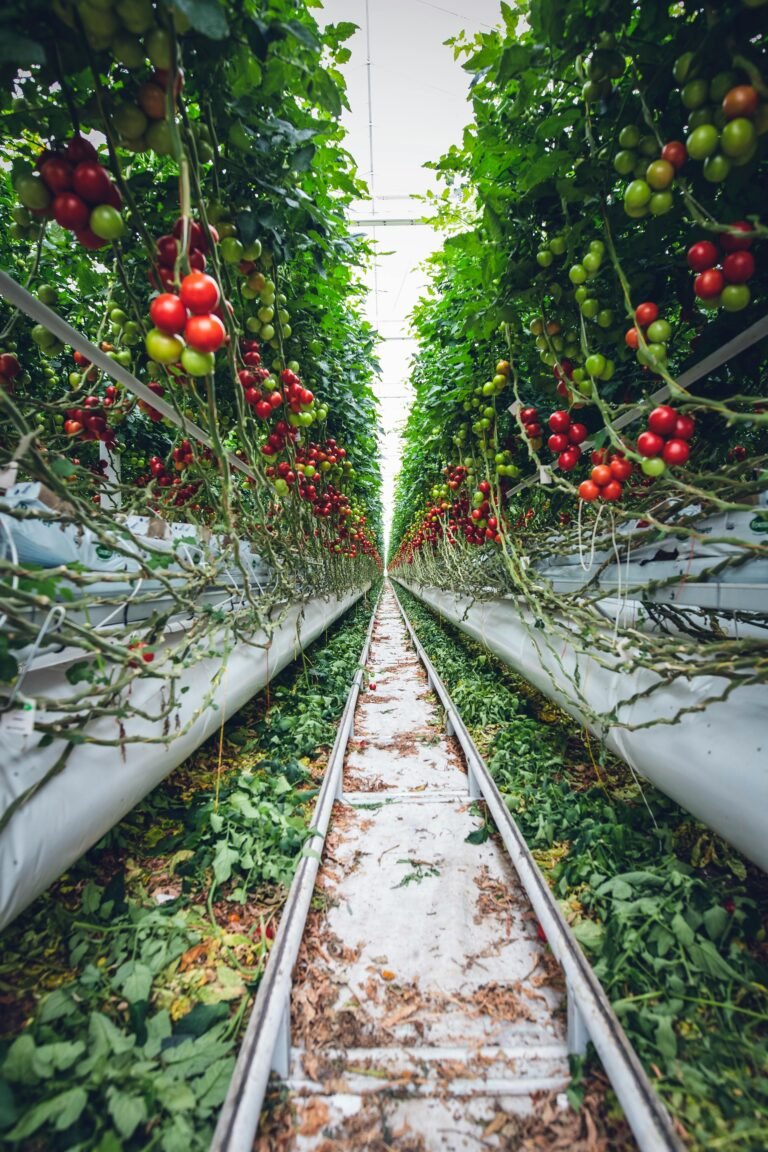
Innovative farming practices have become pivotal with growing concerns about food security and environmental sustainability. Vertical farming and greenhouse farming stand out as two transformative approaches. While both aim to improve agricultural efficiency and reduce environmental impacts, their methods, technologies, and applications differ significantly. This article delves into their unique characteristics and helps you understand which method suits various needs.
Introduction to Farming Methods
Vertical Farming
Vertical farming is a high-tech approach that involves growing crops in vertically stacked layers, often indoors. Utilizing methods such as hydroponics, aeroponics, and artificial lighting, vertical farms are designed to optimize space and create controlled growing environments. They are particularly popular in urban areas, where land is scarce. Vertical farming’s ability to produce fresh, pesticide-free produce year-round has made it an appealing solution for food production in densely populated cities.
Greenhouse Farming
Greenhouse farming uses transparent structures like glass or plastic to create environments that support plant growth. By managing temperature, humidity, and ventilation, greenhouses allow for extended growing seasons and consistent crop yields. This method is widely used for a variety of crops, from vegetables to flowers. Greenhouses are adaptable to different climates and can range from small backyard setups to expansive industrial operations.
Key Distinctions Between Vertical and Greenhouse Farming
Space Efficiency
Vertical farming utilizes vertical space, making it highly efficient in urban areas. A single vertical farm can match the production of a traditional farm on significantly less land. This efficiency is crucial in cities where land is limited and expensive. In contrast, greenhouses expand horizontally and require more physical land, though they remain more efficient than traditional open-field farming. Greenhouses are often established in peri-urban or rural areas where land availability is less restrictive.
Energy Use
Energy consumption is a critical difference:
– Vertical Farming:
Heavy reliance on artificial lighting and climate control leads to higher energy demands. Renewable energy solutions, such as solar panels and wind turbines, are increasingly being integrated to address this challenge. Advances in LED technology have also reduced energy usage significantly.
– Greenhouse Farming:
Greenhouses primarily harness natural sunlight, reducing energy needs. However, supplemental heating and cooling may still be required in extreme climates. Innovations like thermal screens and geothermal heating are helping to minimize energy consumption in greenhouses.
Water Usage
– Vertical Farming:
Known for its water efficiency, vertical farming recycles water through closed-loop systems, using up to 95% less water than traditional methods. This makes it a sustainable choice in regions with water scarcity.
– Greenhouse Farming:
Employs advanced irrigation systems like drip irrigation, which minimizes water wastage. However, the overall water usage in greenhouses can vary based on crop type, climate, and technology used.
Environmental and Economic Impact
Environmental Benefits
Vertical farming reduces land use and eliminates the need for pesticides. Its controlled environment ensures consistent quality and minimizes agricultural runoff. However, its energy dependency can contribute to a higher carbon footprint unless sustainable energy sources are utilized. On the other hand, greenhouses allow for pesticide reduction and can be powered by renewable energy, but constructing them often involves substantial resource use. Both systems significantly reduce the need for long-distance transportation, cutting down on greenhouse gas emissions.
Cost Considerations
– Vertical Farming:
High initial setup and operational costs due to advanced technology and energy needs. Over time, reduced water usage, automation, and localized production can offset costs. Vertical farming is often more viable for high-value crops, such as leafy greens and herbs.
– Greenhouse Farming:
Requires lower initial investments, making it more accessible for small-scale farmers. Operational costs vary depending on the technology and location, with heating being a significant expense in colder climates. Greenhouses are better suited for a wider range of crops, which can provide more consistent revenue streams.
Applications and Crop Suitability
Vertical Farming Applications
Best suited for leafy greens, herbs, and small fruits, vertical farming thrives in urban areas with limited space. Crops like lettuce, spinach, kale, basil, and strawberries are commonly grown. Vertical farms are also experimenting with microgreens and medicinal plants. This method is particularly valuable for producing fresh, pesticide-free produce for local markets, reducing the environmental impact of food transportation.
Greenhouse Farming Applications
Greenhouses can accommodate a broader range of crops, including tomatoes, cucumbers, peppers, flowers, and even certain grains. They are versatile and scalable, serving both small-scale and industrial agricultural needs. Greenhouses are often used for high-value ornamental plants and specialty crops that require controlled conditions to thrive. Advanced greenhouses are even exploring the growth of staple crops like rice and wheat.
Opportunities and Challenges
Opportunities
Vertical Farming:
Ideal for urban food systems, reducing transportation emissions and ensuring year-round crop production. Vertical farms can also be integrated with urban architecture, such as in skyscrapers or repurposed warehouses.
Greenhouse Farming:
Provides scalability and flexibility, supporting a diverse range of crops in various climates. Innovations like semi-closed greenhouses and automated climate control systems are enhancing productivity.
Challenges
Vertical Farming:
High energy requirements and limited crop variety remain significant barriers. The dependency on advanced technology makes it less accessible in developing regions.
Greenhouse Farming:
Requires significant land and is influenced by weather conditions, despite climate controls. Pests and diseases can also be a concern in greenhouse environments if not managed properly.
The Future of Agriculture
Both vertical and greenhouse farming are essential for addressing global food challenges. The future likely lies in integrating these methods:
-Urban Integration:
Vertical farming will dominate urban landscapes, providing fresh produce close to consumers and reducing transportation’s environmental footprint.
– Rural Expansion:
Greenhouses will continue to thrive in rural and peri-urban areas, focusing on larger-scale and diverse crop production.
– Technology Synergy:
Combining the controlled environment technology of vertical farming with the natural advantages of greenhouses could lead to hybrid solutions. For example, solar-assisted greenhouses with vertical growing racks are being explored as a cost-effective and sustainable option.
– Circular Economies:
Both systems are increasingly adopting waste-to-resource models, such as using organic waste to generate energy or nutrients.
Conclusion
Vertical farming and greenhouse farming each offer unique advantages and address specific agricultural needs. While vertical farming excels in urban efficiency and sustainability, greenhouse farming provides versatility and cost-effectiveness for diverse crop production. By leveraging the strengths of both methods, the agricultural industry can create a more sustainable and resilient food system. Farmers, policymakers, and innovators must collaborate to optimize these approaches, ensuring food security and environmental conservation for future generations.
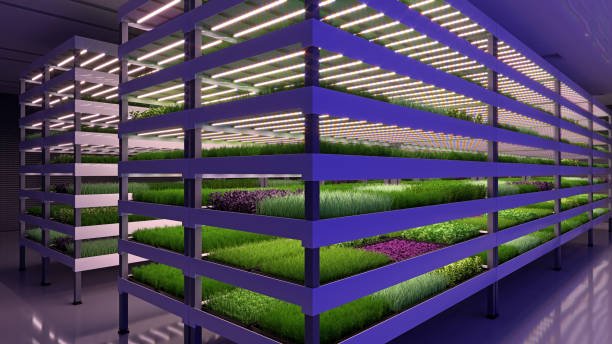
Vertical Farming and Food Security: A Sustainable Solution for the Future
As the global population continues to increase, the demand for food is reaching new heights. Conventional agriculture is beset by a host of issues, including climate change, soil erosion, water shortages, and urbanization. To address the increasing demand for sustainable food production, new solutions like vertical farming have been developed. This article examines how vertical farming can help improve food security by offering a consistent, productive, and sustainable method of food production in urban areas and beyond.
Defining Food Security
Food security is when all people have regular access to enough, safe, and nutritious food to lead a healthy life. The United Nations states that food security relies on four pillars:
- Availability – Enough food needs to be produced at all times.
- Accessibility – Food needs to be accessible and affordable for all.
- Utilization – Food needs to be nutritious and acceptable to all.
- Stability – The food supply should not be disrupted by external shocks, i.e., economic crises or climatic disasters.
Traditional forms of farming are growing more susceptible to these issues, so vertical farming could prove to be a game-changer for food security.
What is Vertical Farming?
Vertical farming is a contemporary agricultural practice that cultivates crops in vertically stacked rows under controlled environments. The farms employ sophisticated technology like hydroponics, aeroponics, and artificial lighting to accelerate growth and limit the use of natural resources. Vertical farms can be established in skyscrapers, warehouses, or abandoned buildings and are hence suitable for urban areas.
How Vertical Farming Enhances Food Security
Year-Round Food Production
In contrast to conventional farming, which is subject to weather and seasonal fluctuations, vertical farming takes place in controlled indoor environments. This makes it possible to grow crops throughout the year continuously, minimizing the chances of food shortages.
Space Efficiency
As populations in urban areas increase, arable land decreases. Vertical farming optimizes production per square foot by layering crops, making it possible to produce food in highly populated areas where conventional farming is impossible.
Less Dependence on Natural Resources
Food production all over the world is severely impacted by water shortages. Vertical farms only use 95% less water than conventional farming with advanced water recycling systems. No soil is required for vertical farms, reducing pressure on arable land.
Reduced Carbon Footprint
By setting farms nearer to consumers, vertical farming eliminates much of the long-distance food transport. This lowers the greenhouse gas emissions connected with shipping and logistics, making the food system more sustainable.
Reduced Food Waste
Traditional farming leads to tremendous food wastage due to pests, weather, and inefficient supply chains. Vertical farming, on the contrary, is a controlled environment with minimal outside interference, which reduces crop loss and food wastage.
Pesticide-Free and Healthy Crops
Since vertical farms are in covered areas, they are less susceptible to pests and diseases. This minimizes the application of harmful pesticides, and the crops become healthier and safer for consumption.
Challenges and Limitations of Vertical Farming
Despite numerous benefits, vertical farming also has challenges that need to be overcome to realize its complete potential in contributing to food security.
High Energy Consumption
Vertical farms make use of high levels of artificial lighting and climate control systems which consume a large amount of electricity. Nevertheless, incorporating renewable sources of energy, like solar or wind power, can mitigate this limitation.
High Initial Investment Costs
The initial costs of vertical farms are much greater than those of conventional farms because of infrastructure, technology, and operational costs. Scales of economies and continuous innovation can lower costs in the long run.
Limited Crop Variety
Vertical farming is ideal for leafy greens, herbs, and small fruits currently, while staple foods such as wheat and rice are still difficult to produce. More research and development must be done to increase the types of crops that can be grown in vertical farms efficiently.
The Future of Vertical Farming and Food Security
As technology evolves, vertical farming will become increasingly affordable and productive. Trends that will define the future of vertical farming include:
– Convergence with Smart Technology:
Crop cultivation and resource use will be optimized by AI-driven monitoring systems, IoT sensors, and data analytics.
– Scaling to Staple Crops:
Researchers are working on developing staple crops such as rice and wheat in controlled environments to enhance food security in the years to come.
– Decentralized Food Production:
Community-based vertical farms can provide fresh, locally produced fruits and vegetables to food deserts, reducing food deserts and improving nutrition.
– Sustainable Energy Solutions:
Solar, wind, and other alternative energy sources will make vertical farming more energy-efficient and cost-effective.
Conclusion
Vertical farming presents a viable solution to all but one of the challenges facing global food security. By providing sustainable, efficient, and localized food production, it has the potential to revolutionize agriculture in urban and rural areas. Although challenges such as energy costs and limited crop variety remain, ongoing technological development and policy support can help alleviate these limitations. As the world moves towards a sustainable future, vertical farming will be key to ensuring that there is an ample supply of fresh, healthy, and affordable food for all.
Who Invented Vertical Farming?
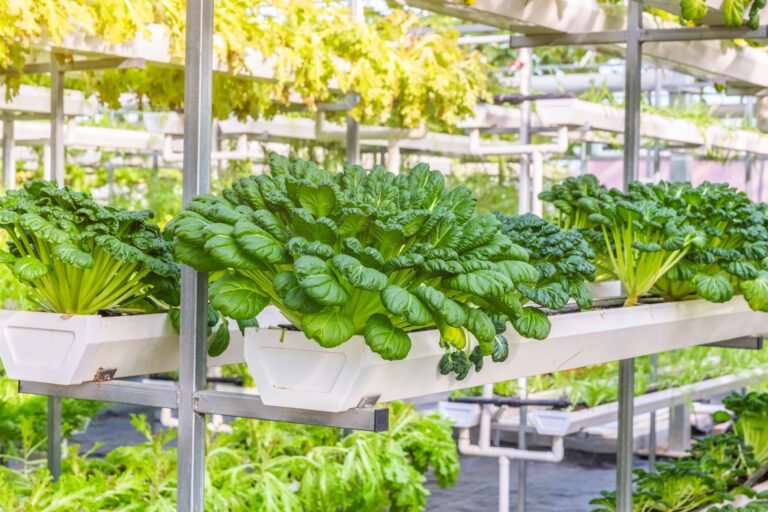
Vertical farming is now one of the most promising solutions to modern agricultural challenges. With urbanization, climate change, and an increasing global population, the demand for new ways of farming has increased. But who invented vertical farming? While the concept has evolved, several visionaries, scientists, and agricultural experts have endeavored to create it. This piece delves into the history of vertical farming, the pioneers in its development, and how it has evolved to become the futuristic technology we observe today.
Early Ideas of Vertical Farming
The concept of cultivating plants within controlled environments was centuries old. Several early ideas and experiments formed the basis of vertical farming today:
Hanging Gardens of Babylon (600 BCE)
One of the earliest examples of a multi-layered agriculture system that we know of is the Hanging Gardens of Babylon. While we don’t have much from the past, we hear stories of a very advanced irrigation system that permitted crops to be grown in a tiered fashion, a forerunner to vertical farming.
Skyscraper Farms (1900s)
The early 20th century saw the first envisioning of modern vertical farming. American agronomist Gilbert Ellis Bailey gave “vertical farming” its name in his 1909 book Vertical Farming. His version, however, was less focused on indoor stacked farming and more on soil enrichment techniques.
During the 1920s and 1930s, Professor William Frederick Gericke at the University of California developed hydroponics—soilless cultures of plants in nutrient water solutions. His research showed that plants can be grown in an environment that can be controlled, opening the door to today’s indoor farming methods.
Dr. Dickson Despommier: (Click here) The Modern Father of Vertical Farming
The most prominent name in vertical farming today is Dr. Dickson Despommier, a professor of microbiology and public health at Columbia University. He and his students devised the idea of vertical farms in urban skyscrapers in 1999 as a way to alleviate global food shortages and environmental problems.
Despommier envisioned multi-story towers with hydroponic and aeroponic systems that would produce fresh crops in the cities. His vision was:
– Optimization of space in urban regions.
– Environmentally friendly food production by recycling water and conserving energy.
– Saving transportation costs by cultivating food close to consumers.
His book, The Vertical Farm: Feeding the World in the 21st Century (2010), helped to popularize the idea and encourage the creation of contemporary vertical farms around the world.
Technological Advances and Industry Growth
Following Despommier’s visionary ideas, technological innovation made vertical farming more feasible. Several pioneers and companies made the industry evolve rapidly:
LED Lighting Revolution
The revolution in light-emitting diode (LED) technology significantly improved indoor farming. LEDs provide specific spectra of light to plant development, reducing energy consumption and increasing efficiency.
Hydroponics, Aeroponics, and Aquaponics
– Hydroponics: Growing plants in nutrient-rich water without soil.
– Aeroponics: Spraying plant roots with nutrients using even less water than hydroponics.
– Aquaponics: Combining hydroponics with fish farming, creating a closed ecosystem.
These technologies have made vertical farming even more productive and resource-efficient.
Key Players in Vertical Farming
Several companies have made the vision of vertical farming a reality:
– AeroFarms (USA): A pioneer in aeroponic farming, growing leafy greens using 95% less water than traditional farming.
– Plenty (USA): Leverages AI and automation for optimum vertical farming efficiency.
– Bowery Farming (USA): Grows locally sourced, pesticide-free crops through innovative indoor farming methods.
The Future of Vertical Farming
As vertical farming evolves, upcoming developments and investment patterns point to a bright future:
Artificial Intelligence and Automation
AI-driven monitoring systems optimize plant growth, minimize waste, and improve efficiency.
Extension to Staple Crops
Existing vertical farms are specializing in leafy greens and herbs, yet experimentation is underway for staple food crops like rice and wheat.
Sustainable Energy Solutions
Because the high cost of energy is an issue, harnessing solar and wind power will enhance the sustainability of vertical farms.
Conclusion
Although ancient cultures and early 20th-century proposals initially thought of vertical farming, Dr. Dickson Despommier is the one who transformed vertical farming in today’s world. His idea, merged with technology, has altered the way we farm in cities. Vertical farming is poised to expand and will shortly be a significant contribution to global food security and sustainable agriculture for centuries to come.

What Can Vertical Farming Do for Climate Change?
Introduction
Climate change is one of the largest problems of our time, with rising global temperatures, unpredictable weather patterns, and increasing natural disasters threatening food security and ecosystems. Traditional agriculture is a significant contributor to environmental degradation through deforestation, excessive use of water, and carbon emissions. However, vertical farming provides a sustainable solution that can be used to reverse climate change while ensuring food production for the world’s growing population.
How Vertical Farming Helps Combat Climate Change
Vertical farming involves the use of controlled environments to produce crops in vertically stacked layers through technologies such as hydroponics, aeroponics, and artificial lighting. Vertical farming has several implications for mitigating climate change.
1. Reducing Greenhouse Gas Emissions
Lower Carbon Footprint
Conventional agriculture is linked to large land use, equipment, and long-distance transport, all of which are causes of greenhouse gas emissions. Vertical farming minimizes emissions by:
– Avoiding the necessity of deforestation and maintaining forests that absorb carbon.
– Growing food locally, and minimizing transportation emissions.
– Reducing dependence on fossil-fuel-dependent farm equipment.
Energy Efficiency Improvements
Although Vertical Farming initially requires significant energy for artificial lighting and climate control, advancements in LED technology, renewable energy integration, and AI-driven automation are making vertical farms more energy-efficient. New-generation LED lights consume significantly less power while providing optimal wavelengths for plant growth. Smart energy grids and battery storage solutions further enhance energy efficiency by reducing reliance on non-renewable power sources, making vertical farming a more sustainable option.
2. Conserving Water Resources
Minimized Water Usage
Water scarcity is a growing global issue, exacerbated by traditional agriculture, which consumes nearly 70% of the world’s freshwater supply. Vertical farming, however, utilizes hydroponic and aeroponic systems that use up to 95% less water by recycling and reusing water efficiently. These closed-loop systems prevent water runoff, reduce contamination of freshwater sources, and ensure precise water delivery to plant roots, optimizing hydration while minimizing waste.
3. Reducing Land Degradation and Deforestation
Protecting Natural Habitats
Expanding farmland often leads to deforestation, soil degradation, and biodiversity loss. Since VF operates in urban areas or repurposed buildings, it eliminates the need for additional land, helping to preserve ecosystems. By reducing agricultural land expansion, Vertical Farming can help restore damaged landscapes, promote reforestation efforts, and protect vital ecosystems that play a crucial role in carbon sequestration and biodiversity conservation.
No Soil Degradation
Traditional agriculture depletes soil nutrients, leading to desertification. Vertical farming removes the need for soil, preventing erosion and maintaining land health. Instead, nutrient-rich water solutions deliver essential minerals directly to plant roots, ensuring optimal growth without exhausting natural resources. This technique prevents soil depletion and eliminates the need for synthetic fertilizers, which often contribute to water pollution and environmental degradation.
4. Mitigating Extreme Weather Impacts
Year-Round Crop Production
Climate change has made weather patterns increasingly unpredictable, leading to droughts, floods, and storms that disrupt traditional farming. Vertical Farming operates in controlled indoor environments, ensuring consistent food production regardless of external climate conditions. By maintaining optimal temperature, humidity, and CO₂ levels, Vertical Farming can sustain high crop yields throughout the year, minimizing food shortages and increasing food security in vulnerable regions.
Disaster Resilience
By decentralizing food production and reducing reliance on large-scale rural farms, vertical farming enhances food system resilience against climate-related disruptions. Urban-based vertical farms reduce dependency on long-distance supply chains, which are vulnerable to extreme weather events and transportation disruptions. This localized approach strengthens food security by ensuring that fresh produce remains available even in times of crisis.
Challenges and Considerations
While vertical farming presents many climate benefits, it also faces challenges that must be addressed for widespread adoption.
High Energy Demand
Vertical Farming requires artificial lighting, temperature regulation, and automated systems, which can lead to high electricity consumption. However, integrating solar, wind, and other renewable energy sources can significantly reduce the environmental impact. Innovations like energy-efficient climate control systems, vertical farm waste-to-energy models, and smart-grid connectivity are helping to lower power consumption and enhance sustainability
Limited Crop Variety
Currently, vertical farming is most efficient for leafy greens, herbs, and some fruits. Expanding the range to staple crops like wheat and rice will require further technological advancements. Researchers are exploring genetic optimization, vertical grain cultivation techniques, and hybrid hydroponic-soil systems to enable the efficient growth of more diverse crops in indoor environments.
Economic Feasibility
The high initial investment for infrastructure and technology remains a barrier. However, as innovation continues, costs are expected to decline, making Vertical Farming more accessible and scalable. Government subsidies, corporate investments, and advancements in automation technology can further lower operational expenses and make vertical farming a more viable solution for global food production.
Future Outlook: Vertical Farming as a Climate Solution
As climate change intensifies, the role of vertical farming in sustainable agriculture will become increasingly crucial. Governments, businesses, and researchers are investing in Vertical Farming technologies to:
- Improve energy efficiency.
- Expand crop diversity.
- Develop cost-effective solutions for large-scale implementation.
Policy Support and Global Expansion
Encouraging government incentives, urban planning integration, and public-private partnerships can accelerate the adoption of vertical farming and enhance its climate impact. Tax breaks, research grants, and urban zoning adjustments can promote large-scale Vertical Farming projects, making them a mainstream food production method.
Technological Innovations
Advancements in AI-driven monitoring, robotic automation, and precision agriculture will further optimize Vertical Farming efficiency, making it a more viable climate-friendly alternative. Smart sensors, automated nutrient delivery, and vertical AI farming algorithms will enhance productivity while reducing costs, making Vertical Farming a key player in future food systems.
Conclusion
Vertical farming is a powerful tool in the fight against climate change. By reducing emissions, conserving water, protecting land, and ensuring climate-resilient food production, it offers a sustainable path forward. While challenges remain, continued technological progress and policy support can unlock its full potential, making vertical farming an integral part of a climate-conscious future.
As the world seeks innovative solutions to environmental challenges, vertical farming stands out as a transformative approach that not only addresses food security but also contributes to a healthier planet. Happy Gardening!
Can Vertical Farming Feed the World?
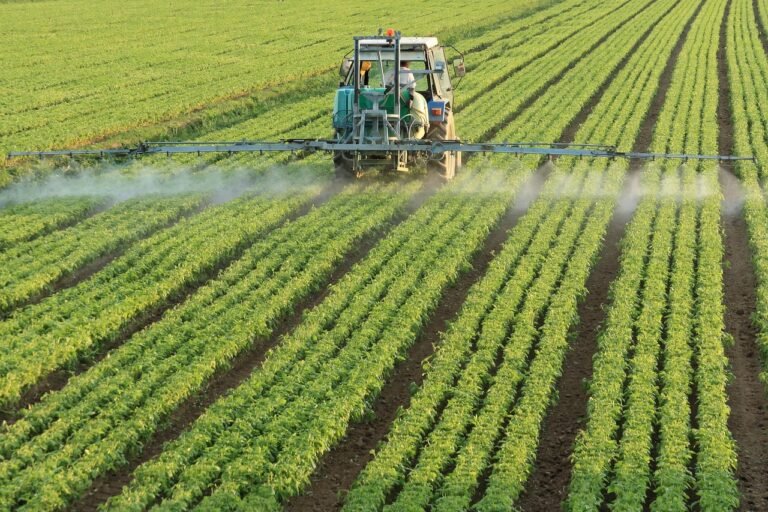
Introduction
With the global population expected to reach nearly 10 billion by 2050, the demand for food is increasing rapidly. Traditional farming methods face challenges such as climate change, land degradation, water scarcity, and urbanization. These issues raise an essential question: Can vertical farming feed the world? This article explores the potential of vertical farming to become a sustainable solution for global food security.
Understanding Vertical Farming
Vertical farming is an innovative agricultural method that grows crops in stacked layers within controlled environments, using advanced technologies such as hydroponics, aeroponics, and aquaponics. These farms are often located in urban areas, warehouses, or repurposed buildings, allowing food to be produced closer to consumers.
Key Features of Vertical Farming
- Soil-Free Cultivation – Uses hydroponic or aeroponic systems instead of traditional soil.
- Water Efficiency – Uses up to 95% less water than conventional farming.
- Climate Control – Creates a stable environment that is unaffected by weather conditions.
- Space Optimization – Utilizes vertical stacking to maximize food production per square foot.
- Reduced Transportation – Grows food in urban areas, reducing emissions from long-distance transport.
The Potential of Vertical Farming to Feed the World
1. Year-Round Crop Production
Traditional farming relies on seasons, weather, and climate conditions, making food supply inconsistent. Vertical farms produce food 365 days a year under controlled conditions, ensuring a steady food supply regardless of external climate factors. This means that unlike traditional agriculture, which is vulnerable to droughts, floods, and changing temperatures, vertical farms can maintain stable crop yields throughout the year. Furthermore, because they are immune to extreme weather conditions, they provide a reliable food source, particularly in regions prone to climate-related disruptions.
2. Increased Crop Yields
Vertical farming is up to 390 times more productive per acre than traditional farms due to its stacked growing systems. By maximizing space and optimizing growth conditions, it can provide more food with fewer resources. In a conventional field, crops are grown in a single layer, requiring vast amounts of land to produce large quantities. In contrast, vertical farming utilizes multiple levels, significantly increasing the amount of food that can be grown in a small area. Additionally, precise nutrient delivery and controlled environmental conditions allow crops to grow faster, leading to multiple harvests per year.
3. Efficient Land Use
With more land being lost to urbanization and deforestation, vertical farms offer a sustainable way to grow food in urban environments. Unlike traditional farms, which require vast amounts of land, vertical farms can be built in cities, abandoned buildings, or even underground. This reduces the need for deforestation, helping to protect natural ecosystems and biodiversity. Additionally, vertical farms can be integrated into existing city infrastructure, such as rooftops or indoor facilities, making efficient use of space that would otherwise go unused.
4. Water Conservation
Agriculture accounts for 70% of global freshwater usage, and many regions face severe water shortages. Vertical farming significantly reduces water waste by using closed-loop irrigation systems that recycle and reuse water. In hydroponic and aeroponic systems, water is carefully measured and delivered directly to plant roots, minimizing excess use. Unlike traditional farming, which loses large amounts of water to evaporation and runoff, vertical farms can reduce water consumption by up to 95%, making them an ideal solution for water-scarce areas.
5. Reduced Dependence on Pesticides and Fertilizers
Because vertical farms operate in controlled indoor environments, they are less susceptible to pests and diseases. This eliminates the need for harmful pesticides and herbicides, making food safer and more environmentally friendly. In conventional farming, pests and weeds are a constant threat, leading to the widespread use of chemical treatments that can harm soil health and biodiversity. Vertical farms, however, use sealed environments that prevent pests from entering, reducing reliance on chemicals and promoting clean, organic food production.
6. Resilience to Climate Change
Extreme weather events such as droughts, floods, and heatwaves are major threats to food production. Vertical farming provides a climate-resilient alternative by growing crops indoors, shielded from external environmental fluctuations. Climate change is causing unpredictable shifts in weather patterns, making traditional farming increasingly difficult. With vertical farming, growers can maintain consistent temperatures, humidity levels, and lighting conditions, ensuring stable and predictable crop yields even in the face of climate-related disasters.
Challenges and Limitations of Vertical Farming
While vertical farming offers many benefits, some challenges must be overcome before it can fully replace traditional agriculture.
1. High Energy Consumption
One of the biggest concerns is electricity usage, particularly for LED lighting, climate control, and automation systems. However, integrating solar panels, wind energy, and energy-efficient LEDs can help reduce the carbon footprint of vertical farms. Currently, many vertical farms rely on artificial lighting to replace sunlight, which can be costly. However, research is being conducted on optimizing light spectrums, automation, and renewable energy sources to make vertical farming more sustainable and energy-efficient.
2. High Initial Investment Costs
Setting up a vertical farm requires significant investment in infrastructure, technology, and skilled labor. However, as technology advances and costs decline, vertical farming is expected to become more affordable and widespread. The high startup costs often make it challenging for small-scale farmers to enter the industry. However, with increased funding, government incentives, and advancements in automation, the overall cost of operating vertical farms is gradually decreasing, making it more accessible to various stakeholders.
3. Limited Crop Variety
Currently, vertical farms primarily grow leafy greens, herbs, and some fruits because these crops have short growth cycles and thrive indoors. Expanding vertical farming to staple crops like wheat, rice, and corn will require further technological innovation. Researchers are experimenting with ways to grow root vegetables, grains, and legumes in vertical farming environments, but challenges such as pollination, root space, and crop height limitations still need to be addressed.
4. Scalability and Global Adoption
While vertical farming is gaining traction in developed nations, expanding it to developing countries presents logistical and economic challenges. Affordable, small-scale vertical farming solutions could help bridge this gap. Many developing countries rely on traditional farming due to lower costs and accessibility. However, localized vertical farming initiatives using low-energy systems and affordable technology could offer a solution for urban food security in these regions.
Future Prospects: Can Vertical Farming Truly Feed the World?
The future of vertical farming depends on technological advancements, policy support, and economic feasibility. Several key developments could make vertical farming a dominant global food production system.
1. Integration with Smart Technology
Artificial Intelligence (AI), robotics, and automated monitoring systems will improve efficiency, reduce waste, and optimize plant growth. These technologies can enable real-time adjustments to nutrients, lighting, and temperature, maximizing yield while minimizing energy use.
2. Expansion to Staple Crops
Ongoing research aims to adapt vertical farming techniques for staple crops like rice, wheat, and potatoes, making large-scale production more viable. Genetic modifications and optimized growing techniques are being explored to increase yield potential for larger-scale food production.
3. Collaboration with Traditional Agriculture
Rather than replacing traditional farms entirely, vertical farming can complement existing agricultural practices by providing a steady supply of fresh produce and reducing pressure on farmlands. Hybrid models that integrate vertical and horizontal farming could create balanced and sustainable agricultural systems.
Conclusion
While vertical farming may not entirely replace traditional agriculture, it has the potential to revolutionize food production and address global food security challenges. Continued innovation, investment, and policy support will determine how effectively vertical farming can scale and contribute to feeding the world.
